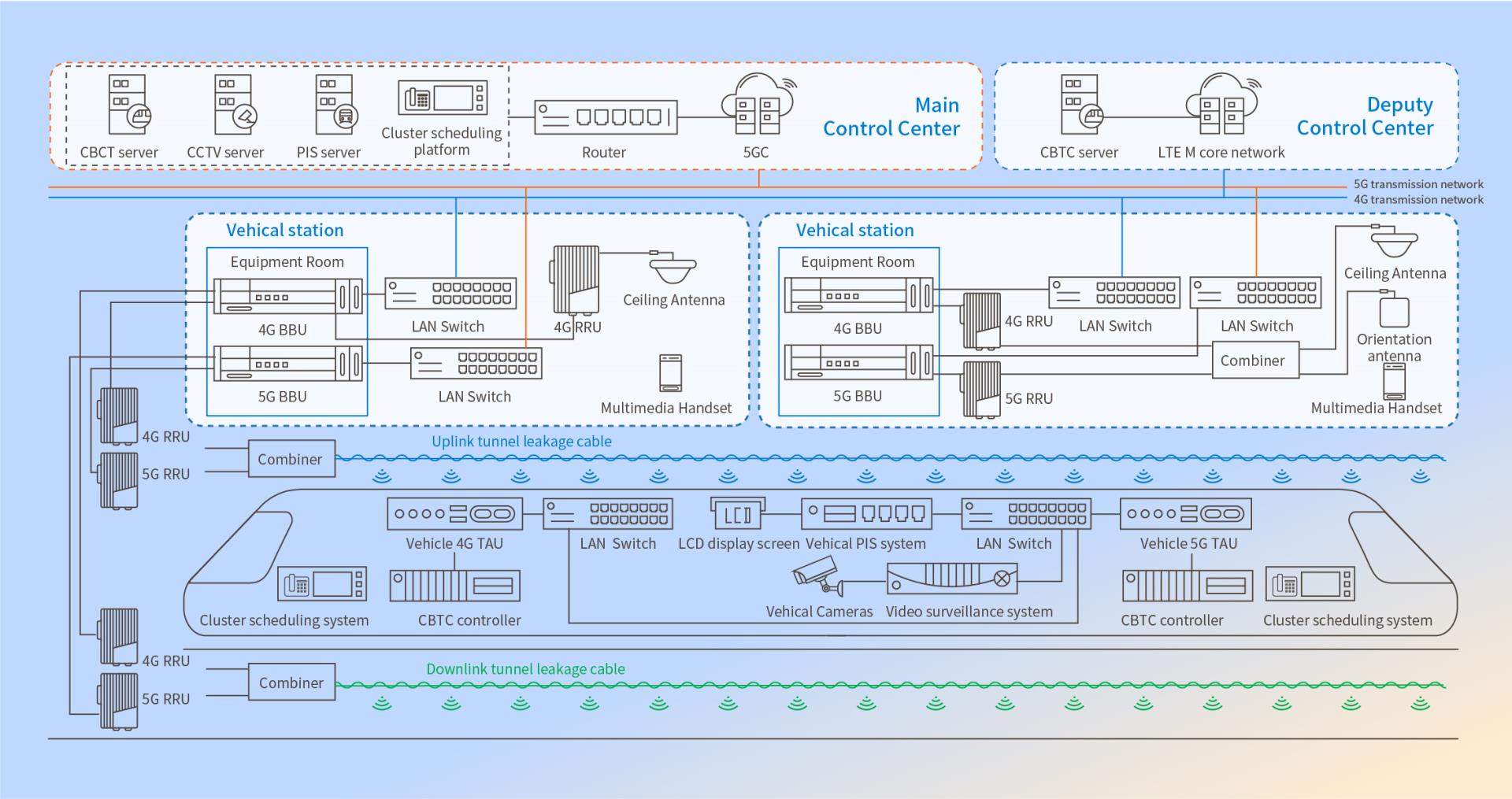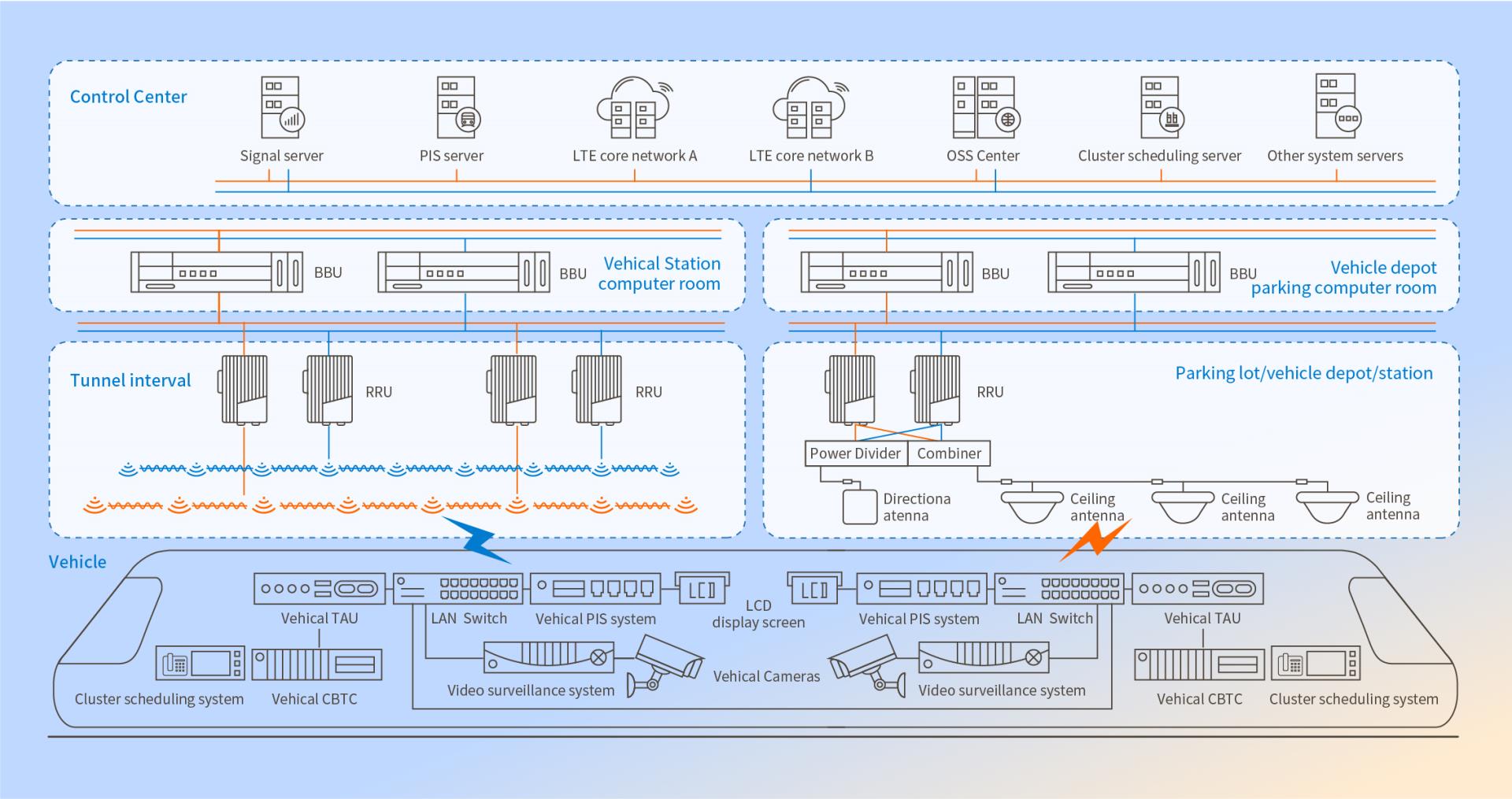
The LTE-M system has perfectly met the communication needs of urban rail transit operation safety business vehicles, but due to the limited speed of the LTE-M system, the effect of carrying video services is not ideal. At the same time, the 1.8G private network frequency band used in LTE-M needs to be approved by the local government without committee, so it is difficult for some small-volume urban rail transit to obtain the frequency band. With the commercial use of 5G networks, some urban rail transit has begun to try to use LTE-M+5G dual networks to realize vehicle-site communication. Among them, LTE-M private networks carry train control services with high requirements for network security and reliability, and 5G networks carry video services with high bandwidth requirements. If the 5G private network frequency band is approved in the future, two complementary 5G private networks can be built to meet the communication needs of vehicles and land. It adopts LTE-M+5G dual-network networking, uses 1.8G private network bands to build LTE-M private network, and co-constructs 5G networks with operators. Both the LTE-M network and the 5G network carry train control services, while the 5G network, as a comprehensive carrier network, carries video services.

The LTE-M+5G integrated networking can not only ensure the safety of train operation but also the quality of video business. In the future, it can access more intelligent applications, improve the service quality of urban rail, and enhance the maintenance capacity of urban rail.
CICT Mobile LTE-M Vehicle Wireless Communication System is based on 4G LTE-M technical standards. The equipment is mainly composed of core network, network management, base station, on-board terminal and Sky Feed System. In order to ensure the reliability of the wireless network, the A and B dual-network architecture is adopted. The two networks are completely independent and work in parallel without affecting each other. Among them, Network A is a comprehensive carrying network, and Network B is an independent carrier network. The reliability of the two network systems is higher than 99.99%, ensuring the safety of train operation. The LTE-M dual-network core network is placed in the control center or vehicle depot computer room. The LTE-M dual-network base station BBU equipment is placed in the centralized station and vehicle depot/parking lot, which is connected to the core network of the control center through the wired transmission network. LTE-M dual-network base station RRU equipment is installed in the main tunnel, access section line, vehicle segment/park lot throat area and vehicle depot/park lot warehouse. RRU feeds the signal to the leakage cable or antenna through power divider and circuit combiner. The front and rear of the train are equipped with TAU respectively, which is connected to the on-board equipment of the application system through the on-board switch.

The LTE-M dual-network redundant networking mode is adopted, and the system reliability is higher than 99.99%, which meets the safety requirements of urban rail operation. The system can carry column control, video and scheduling services to reduce the repeated construction of urban rail networks. The network equipment is concentrated in the computer room and the tunnel entrance, which is convenient for construction and post-maintenance.